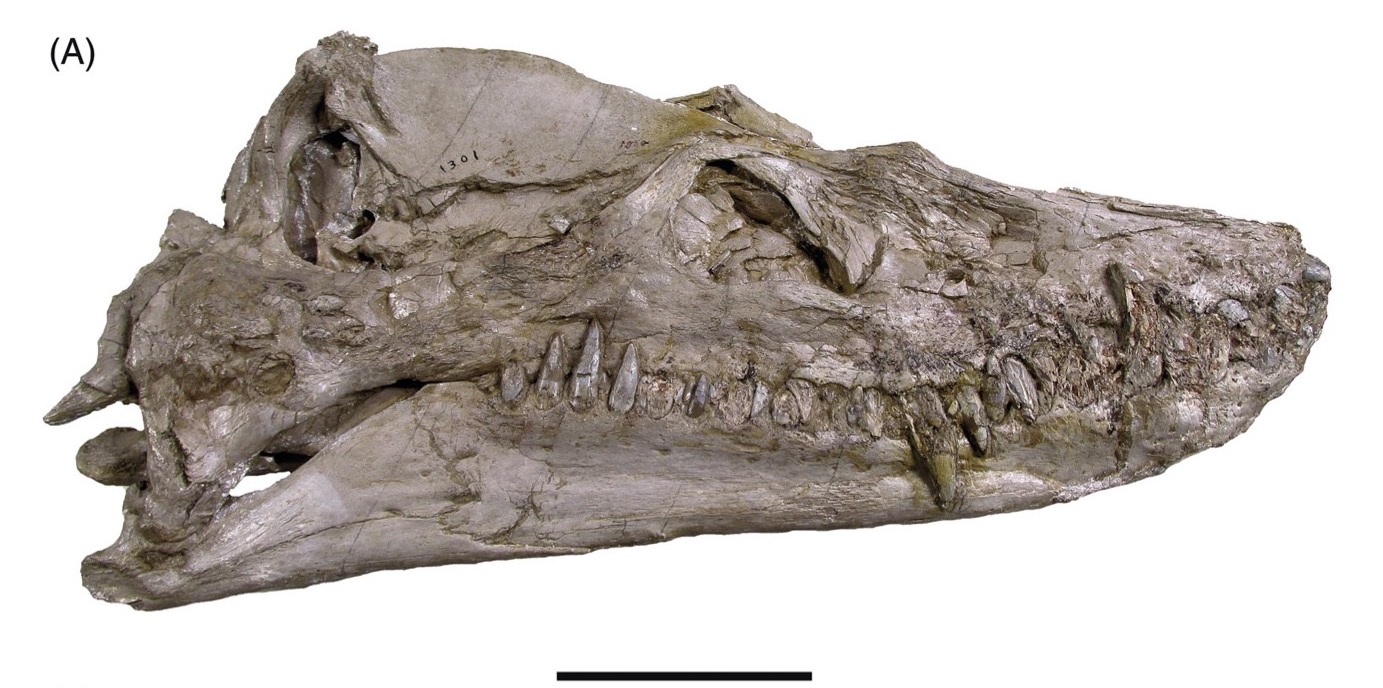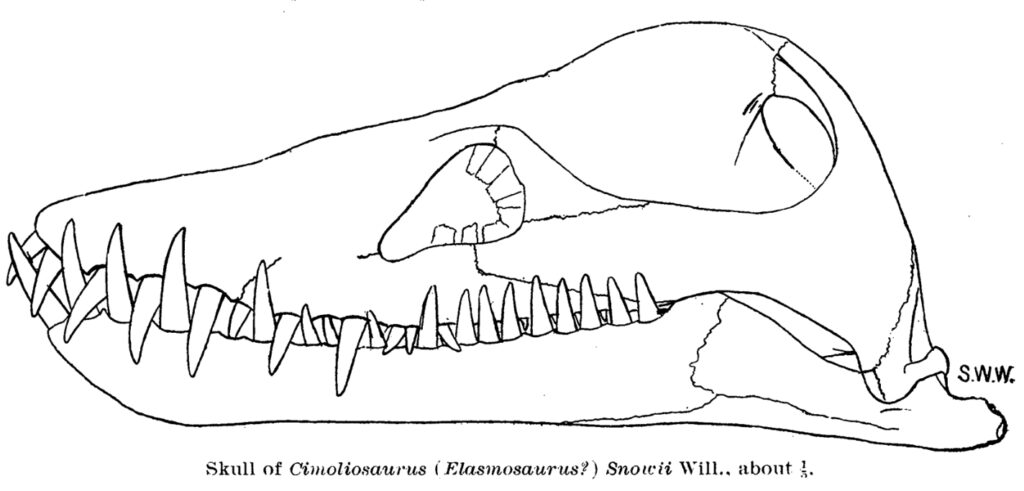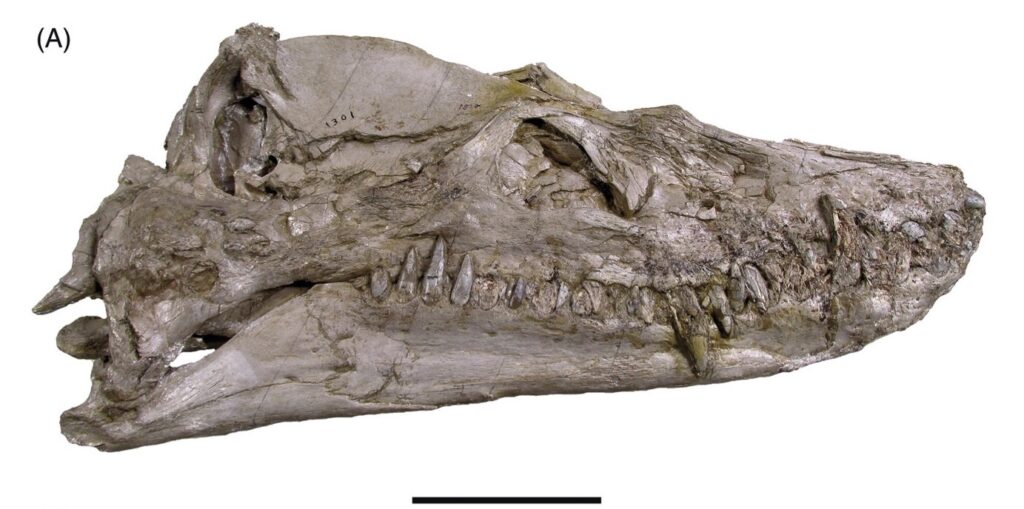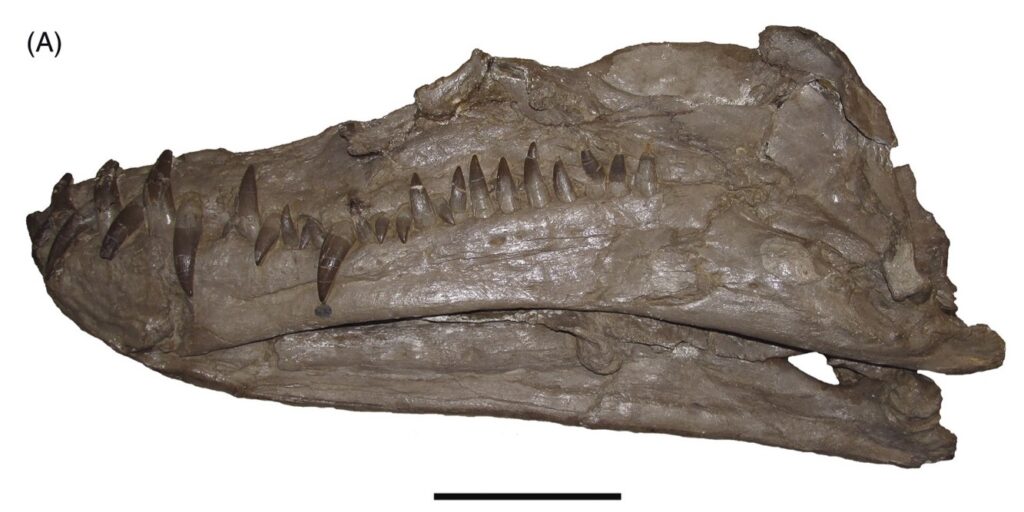Styxosaurus

S. snowii
The holotype specimen (KUVP 1301) of Styxosaurus is an articulated skull and anterior portion of the neck. It was found in the Niobrara Chalk near Hell Creek, Logan County, Western Kansas in 1890. It was described later that year as a new species Cimoliosaurus snowii by Williston (1890a) (and Williston 1890b), who subsequently (Williston 1906) referred the species to Elasmosaurus. Eventually, Welles (1943) erected the genus name Styxosaurus for the species. It was a significant discovery because it was the first elasmosaurid with a complete skull.
A second species, S. browni, was named in 1952 (Welles 1952) for an elasmosaurid specimen (AMNH 5835) from the Sharon Springs Formation, Niobrara County, Wyoming. However, the validity of this species and its referral to Styxosaurus has remained controversial with some researchers interpreting it as a referred specimen of Hydralmosaurus serpentinus (Carpenter 1999), while others regard it as valid (Otero 2016).
Carpenter (1999) referred several other specimens to Styxosaurus snowii, including the holotype specimens of Alzadasaurus pembertoni (Welles and Bump 1949), Thalassiosaurus ischiadicus (Welles 1943), Alzadasaurus kansasensis (Welles 1952), and Thalassonomosaurus marshii (Welles 1943). However, the holotype specimen of S. snowii was thoroughly reassessed by Sachs et al. (2018), who resolved to restrict the species to the holotype. This is important because the many specimens that had been referred to Styxosaurus snowii over the decades had caused the diagnosis of the species to become muddied. Sven Sachs has posted a helpful summary of his research on Styxosaurus snowii on his website: An iconic Late Cretaceous plesiosaur, by Sachs and Kear.
According to the reanalysis of the holotype specimen by Sachs et al. (2018), “Styxosaurus snowii can be distinguished from all other elasmosaurid plesiosaurians based on the following combination of character states: anisodont dentition comprising five functional tooth positions in each premaxilla, which interlock with the largest dentary teeth (the anterior-most pair of dentary crowns directly abutting each other), and are followed by a pair of prominent ‘fangs’ at maxillary tooth positions 4–5, and a posterior-most series of upright dentary teeth that enclose the upper tooth rows; presence of a prominent dorsomedian crest that extends to the tip of the premaxillae, and forms a low boss between the external nares and orbits; development of a prominent convex expansion on the posterolateral edge of the squamosal; and platycoelous anterior and mid-series post-axial cervical vertebral centra that are substantially longer than high (length/height ratio2:1), and bear both lateral longitudinal ridges and prominent ventral notches” (p.562-563).
The holotype of S. snowii is housed in the University of Kansas Natural History Museum, Lawrence, Kansas, U.S.A.



